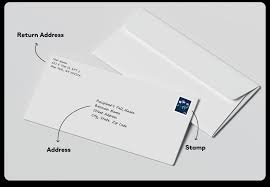In the era of digital communication dominance, the traditional act of sending mail may seem archaic to some. However, it remains an indispensable aspect of our daily lives, serving as a vital conduit for personal and professional correspondence. Whether it’s a letter to a loved one, a package to a customer, or an official document to a government agency, ensuring the accuracy of the mailing address is paramount. Yet, many individuals and businesses often overlook the importance of adhering to proper address formats. In this guide, we’ll delve into the intricacies of address formatting, explore the significance of USPS address validation, and provide illustrative examples to aid in mastering the art of addressing.
Understanding Address Format
Address formatting follows a standardized protocol to ensure efficient mail delivery. It comprises several essential components, each serving a distinct purpose:
1. Recipient’s Name: The name of the intended recipient or addressee. It should be written to avoid confusion.
2. Delivery Address: This includes the street address, apartment or suite number (if applicable), city, state, and ZIP code. It’s crucial to provide accurate details to facilitate precise delivery.
3. City, State, and ZIP Code: These elements are integral for routing mail to the correct destination. The city and state should be written in full, while the ZIP code ensures further accuracy.
4. Country (if applicable): For international mail, specifying the destination country is imperative to avoid misdirection.
Proper Mailing Address Format
Domestic Addresses (Within the United States)
For domestic mail within the United States, the following format is typically observed:
| [Recipient’s Name][Street Address or P.O. Box][City, State, ZIP Code] |
Example:
| John Smith123 Main StreetAnytown, NY 12345 |
In cases where a P.O. Box is used instead of a street address:
| [Recipient’s Name][P.O. Box][City, State, ZIP Code] |
Example:
| Jane DoeP.O. Box 567Springfield, IL 67890 |
International Addresses
International addresses may vary significantly depending on the destination country’s postal conventions. However, a general format includes:
| [Recipient’s Name][Street Address or P.O. Box][City/Town/Village][Postal Code][Country] |
Example:
| Juan MartinezAv. Revolución 123, Apt. 4BColonia Juárez06100 Ciudad de MéxicoMéxico |
Importance of USPS Address Validation
The United States Postal Service (USPS) offers address validation services to help ensure accurate delivery and reduce mail errors. Businesses and individuals can utilize USPS address validation tools to verify and standardize addresses before sending mail. Here’s why it matters:
1. Enhanced Accuracy: USPS address validation checks addresses against a comprehensive database, correcting errors and standardizing formats to improve accuracy.
2. Cost Savings: By reducing undeliverable mail and returns, address validation helps businesses save on postage costs and operational expenses.
3. Time Efficiency: Validating addresses before mailing saves time by minimizing delays associated with incorrect or incomplete address information.
4. Customer Satisfaction: Accurate delivery enhances customer experience, leading to higher satisfaction and repeat business.
Examples of Properly Formatted Addresses
1. Business Correspondence:
| ABC CompanyAttn: Marketing Department456 Business Avenue, Suite 201Metropolis, CA 98765 |
2. Personal Letter:
| Sarah Johnson789 Oak StreetApartment 3CSpringfield, IL 67890 |
3. International Mail:
| Hans MüllerHauptstraße 1210115 BerlinGermany |
Conclusion
Mastering the art of addressing is essential for ensuring the smooth flow of mail, whether it’s a letter, package, or official document. By understanding the components of proper address formatting and leveraging USPS address validation tools, individuals and businesses can streamline their mailing processes, reduce errors, and enhance delivery accuracy. So, the next time you prepare to send mail, remember the importance of getting the address right—it’s the first step toward successful delivery.



